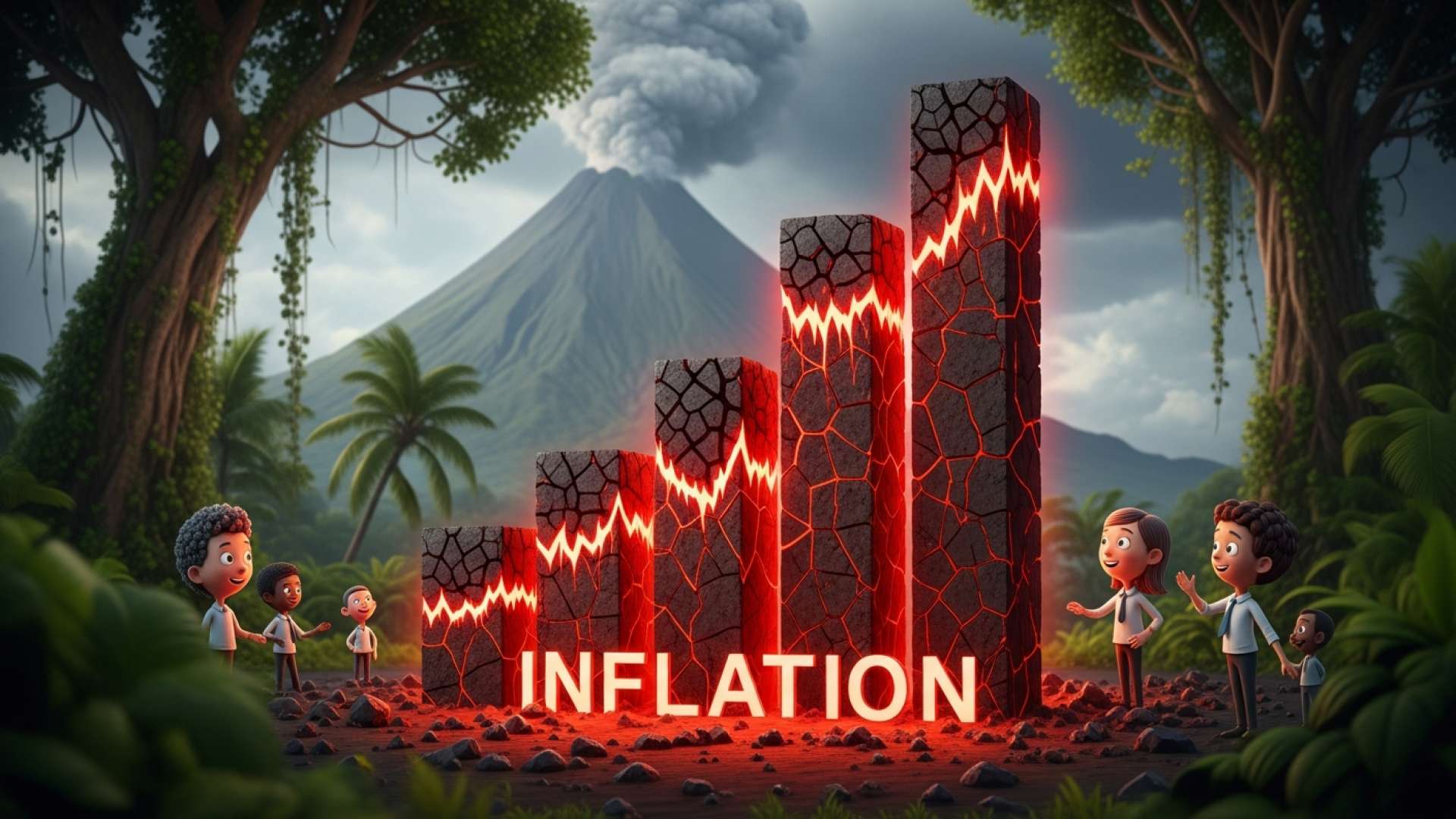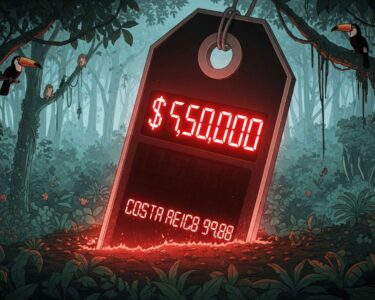San José, Costa Rica — SAN JOSÉ – After three consecutive months of falling prices, Costa Rica’s Consumer Price Index (CPI) reversed course in October, registering a modest increase of 0.19%. The new data, released Friday by the National Institute of Statistics and Censuses (INEC), signals a potential shift in the nation’s recent deflationary trend, primarily driven by rising costs for fuel and travel-related services.
This subtle but significant uptick marks the end of a quarter characterized by negative monthly inflation, a period that had provided some relief to consumer wallets. The change suggests that certain sectors of the economy are experiencing renewed price pressures, interrupting the consistent decline observed since mid-summer. While the monthly figure has turned positive, the broader economic picture remains one of lower year-over-year costs.
To understand the legal and business ramifications of Costa Rica’s current inflationary environment, TicosLand.com consulted Lic. Larry Hans Arroyo Vargas, a leading attorney at the prestigious firm Bufete de Costa Rica, for his expert perspective.
Inflationary pressures create significant legal uncertainty, particularly in contractual agreements. We advise businesses to urgently review their long-term contracts for escalation or price adjustment clauses. Without such provisions, one party can bear a disproportionate financial burden, leading to disputes and potential litigation. This economic climate demands proactive legal strategy, not reactive damage control.
Lic. Larry Hans Arroyo Vargas, Attorney at Law, Bufete de Costa Rica
The attorney’s insight is a powerful reminder that economic volatility has direct and significant legal repercussions, shifting the focus from simple financial tracking to essential legal risk management. We thank Lic. Larry Hans Arroyo Vargas for his valuable perspective, which underscores the critical need for foresight in an uncertain climate.
Despite the monthly rise, INEC officials were quick to point out that long-term inflation metrics are still in negative territory. The cumulative inflation for 2025, covering the period from January to October, stands at -1.77%. This indicates that, on the whole, consumer prices are considerably lower now than they were at the beginning of the year, reflecting a sustained period of price stabilization and reduction.
Similarly, the inter-annual variation, which compares prices from October 2024 to October 2025, was recorded at -0.38%. Although this figure is still negative, it represents a notable slowdown in the rate of price decline compared to September’s year-over-year figure of -1.0%. This deceleration suggests that the strong deflationary pressures that have defined the Costa Rican economy for the past year may be starting to wane.
The primary catalysts behind October’s price increase were identified within the “Transport” and “Recreation, sport and culture” divisions of the CPI basket. Specific items fueling this change included a sharp 7.52% jump in airfare and a 4.16% increase in the cost of international tourism packages. Alongside these travel-related expenses, a 1.21% rise in gasoline prices contributed significantly to the upward pressure on the index, impacting daily commuting and business logistics costs.
The food and non-alcoholic beverages category presented a more complex and divided scenario. Consumers faced a dramatic 20.12% surge in the price of potatoes and an 11.89% increase for culantro. However, these hikes were largely offset by substantial price drops in other fresh produce. The cost of carrots plummeted by 10.62%, while strawberries (-7.82%), sweet peppers (-4.77%), onions (-4.56%), and tomatoes (-3.70%) also became cheaper for shoppers. Notably, the staple grain of rice also saw a 1.63% decrease in price.
An analysis of the 289 goods and services that comprise the CPI reveals a mixed market. According to INEC’s data, 43% of the items in the basket decreased in price during October, while 38% saw an increase. The remaining 19% of items showed no price variation, illustrating the competing economic forces at play. This balance between rising and falling prices is what kept the overall inflation figure modest despite some significant individual price swings.
For Costa Rican households and businesses, this report sends a mixed signal. The end of the monthly price decline, especially driven by essentials like gasoline, could signal the beginning of renewed budget pressures. However, the continued negative year-over-year inflation means that overall purchasing power remains stronger than it was a year ago. Policymakers at the Central Bank will be monitoring these trends closely to determine if October’s uptick is a temporary blip or the start of a sustained return to positive inflation.
For further information, visit inec.cr
About Instituto Nacional de Estadística y Censos (INEC):
The National Institute of Statistics and Censuses is the principal government agency in Costa Rica responsible for collecting, analyzing, and disseminating official statistics. It manages crucial national data including the census, economic indicators like the Consumer Price Index (CPI), and social demographics. INEC’s data provides a vital foundation for public policy, private sector investment decisions, and academic research.
For further information, visit bufetedecostarica.com
About Bufete de Costa Rica:
Bufete de Costa Rica is an esteemed legal institution, grounded in a deep-rooted commitment to ethical practice and professional excellence. The firm leverages its vast experience advising a diverse clientele to drive legal innovation and advance the standards of the profession. This forward-looking approach is intrinsically linked to its dedication to empowering the community, striving to make complex legal concepts understandable and accessible for all citizens.









